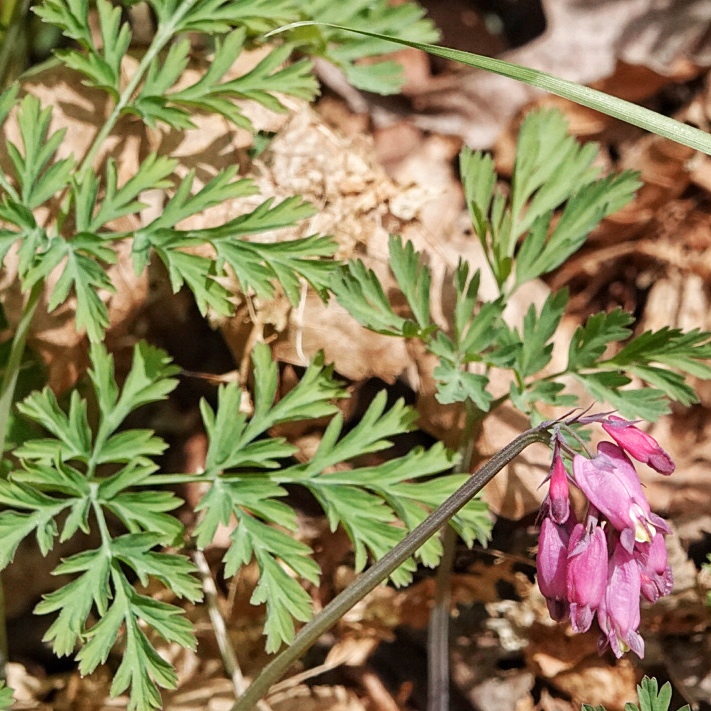
Who doesn’t love Pacific Bleeding Hearts? Many, many years ago, the first time I saw this species in the wild, I assumed it must have escaped cultivation, because I, in my ignorance, had always assumed that the bleeding hearts I saw in peoples gardens bore a flower which must have been shaped by the hand of man, since nature could never have evolved something so lovely and yet so completely unfloral in form.
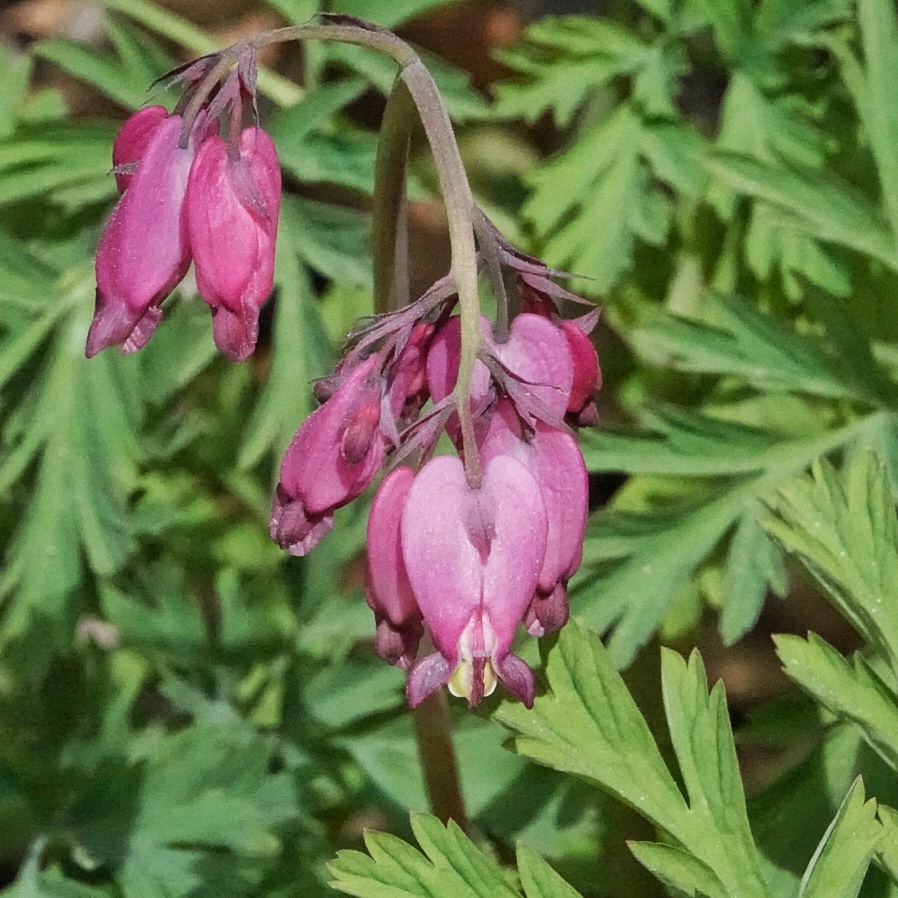
I know better now, having seen many different oddly shaped flowers, and having realized how creative natural selection is at filling any empty niche, or at least exploiting any available one, but I still marvel at the structure and beauty of these amazing flowers.
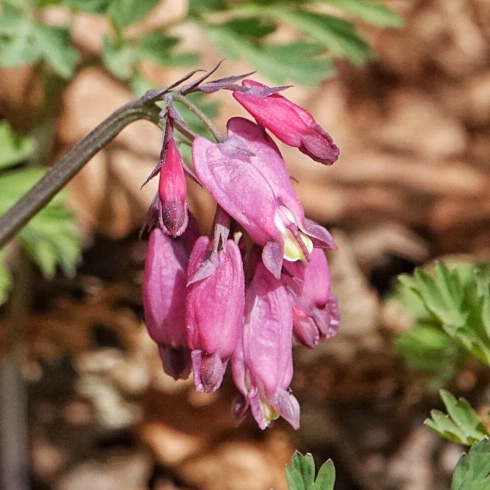
Much like Trillium ovatum, and many other woodland plants for that matter, Dicentra formosa utilizes ants in dispersing its seeds, a type of mutualism that goes by the name of myrmecochory. Each seed has a fleshy cap of starchy tissue that is saturated with oil, which is called an elaiosome. The ants take the seed with its oil body back to the colony, consume the elaiosome but not the seed, and the seed is left to germinate in the rich soil of the ant nest.
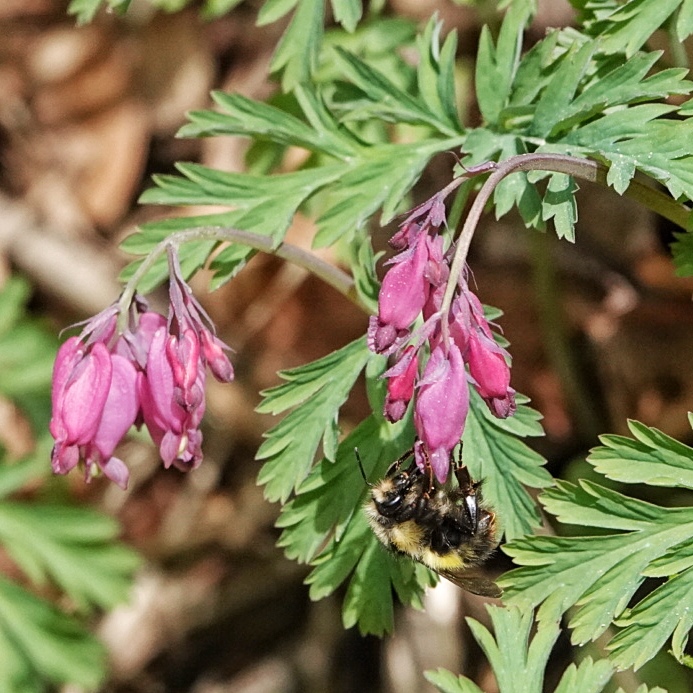
The Skagit tribe used a decoction from the roots as a dewormer, and chewed raw roots for toothaches. But this is not a plant that novice herbalists should be experimenting with. It contains a variety of alkaloids, several of which are toxic.
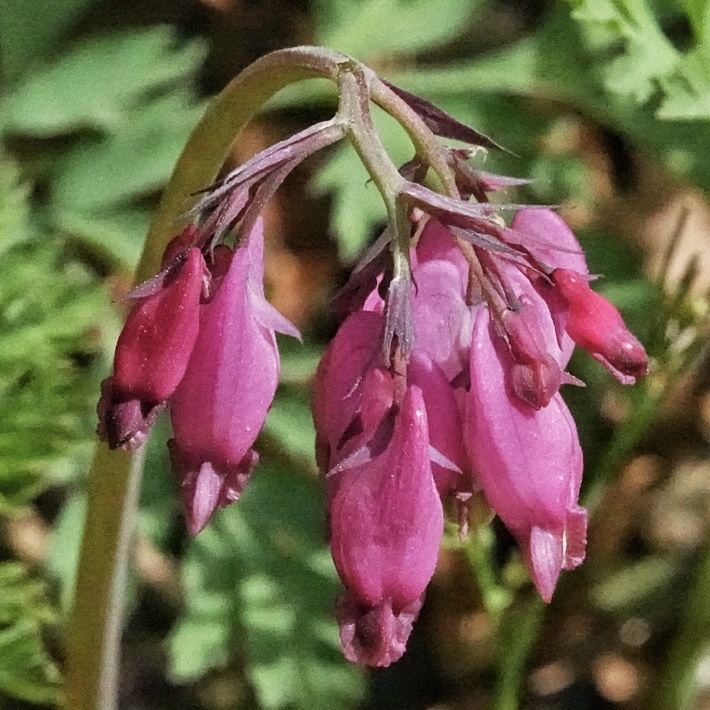
Description-Perennial plant that is often bushy and up to 2’ tall; many stems rising from the rhizome; leaves long and wide, pinnately divided into many leaflets; leaflets sea green, narrow lobed, with pointed tips, often with a waxy bluish white coating; multiple flowers hanging (pendant) from a stalk (scape) that arises from the rhizome; flowers light to dark pink, heart shaped, with sac-like spur on the outer lobe.
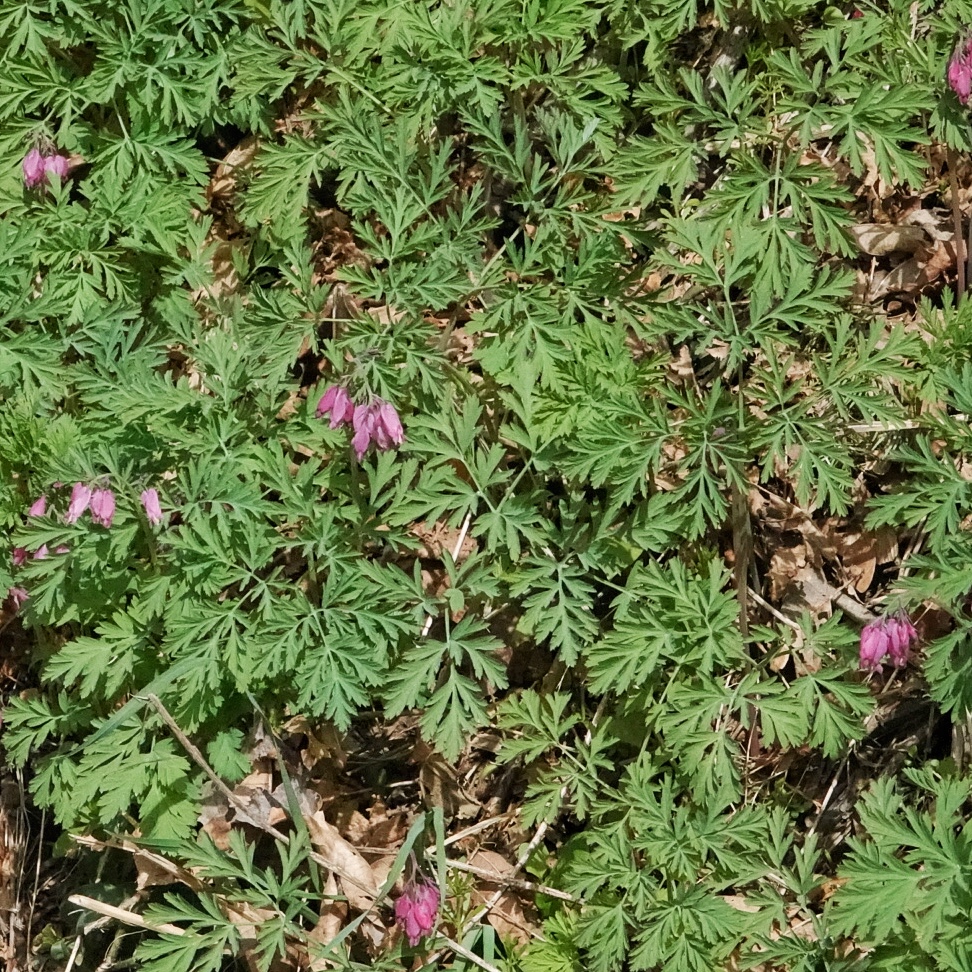
Similar species– D. cucullaria (Dutchman’s breeches) has white flowers with pointed rather than rounded bases; other Dicentra have much differently shaped flowers, as do Corydalis spp., though the foliage is similar.
Habitat– Moist to mesic forests and mixed woodlands up to 7,000’.
Range-Western North America; primarily west of the east slope of the Cascades in our region, with populations in nw California, and scattered populations in the Blue and Wallowa Mtns.
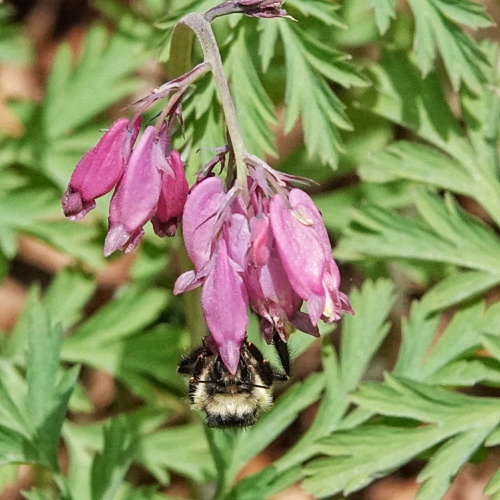
Reproductive timing-Blooms March to July in the wild.
Eaten by– The butterfly Parnassia clodius uses this plant as a larval host. Larvae of the notorious Spotted Cucumber Beetle (Diabrotica undecimpunctata) feed on its roots and stems in the absence of agricultural sources to infest.And, of course, it is an important nectar and pollen resource for spring emerging insects.
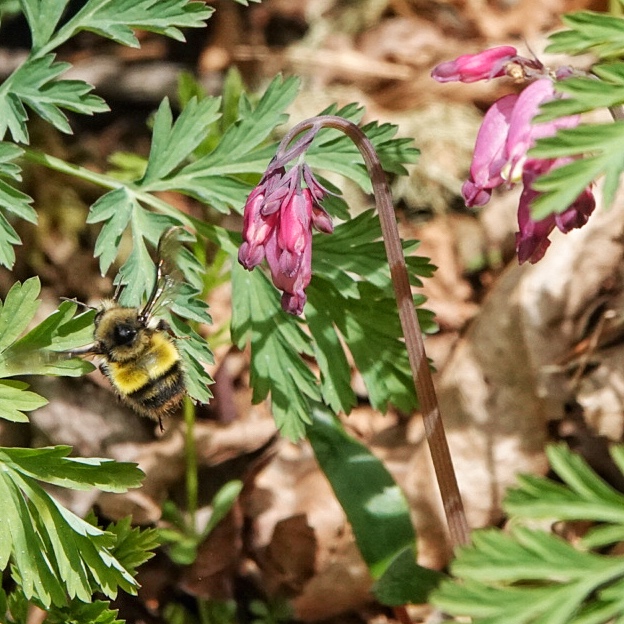
Etymology of names– Dicentra is from the Greek for ‘two spurs’ and references the sac-like spurs at the end of each outer flower lobe. The specific epithet formosa is from the Latin for beautiful, which needs no explanation if you’ve ever seen this plant in bloom.
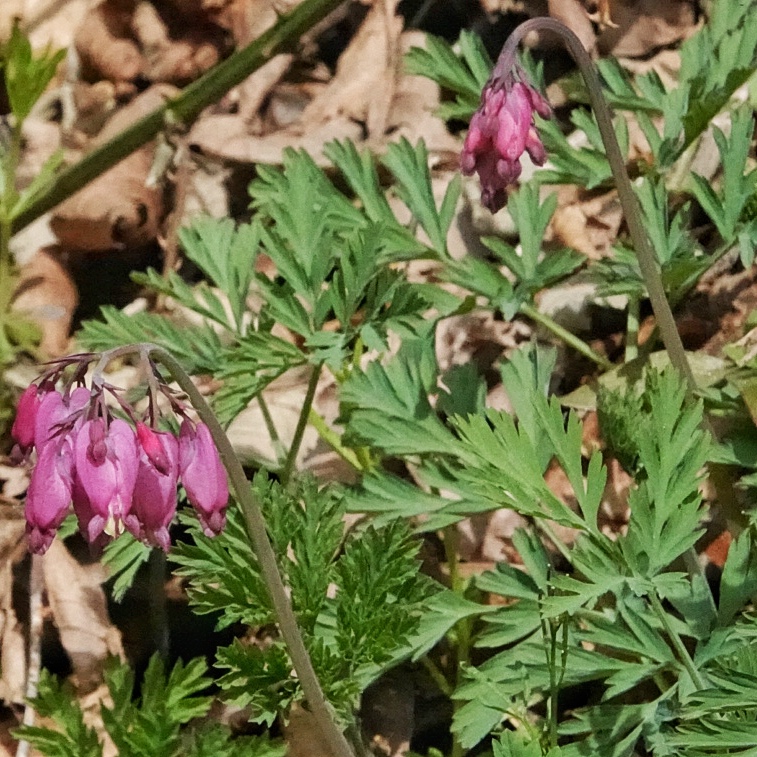
http://www.efloras.org/florataxon.aspx?flora_id=1&taxon_id=233500574
Dicentra formosa | Pacific Bleeding Heart | Wildflowers of the Pacific Northwest
https://www.wnps.org/blog/plant-profile-pacific-bleeding-heart-dicentra-formosa?format=amp
Burke Herbarium Image Collection
https://www.rainyside.com/plant_gallery/natives/Dicentra_formosa.html
https://calscape.org/Dicentra-formosa-()
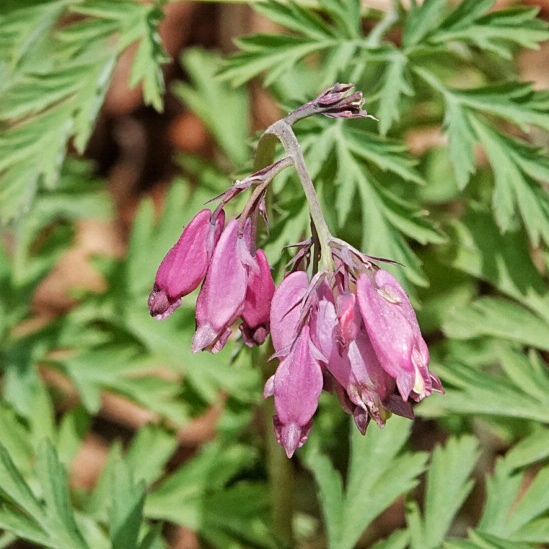
I had no idea about the spread of seeds by ants! Isn’t mother nature creative and amazing!
Yes it is!
I discovered your brilliant site a few months back and just wanted to say how much I enjoy it. I enjoy the variety of information, the attention to all species, the succinct writing and the numerous photos. A bit of nature with my coffee each morning!
As a trained herbalist, I appreciate your inclusion of medicinal uses as well as your consistent warnings to readers.
Keep up the great work!
Thank you Sue! It is a labor of love for me, and I greatly appreciate your appreciation!
I’ve seen many a Bleeding Heart both in the wild and in northwest gardens, so much so that I considered them vulgar in the most Latin sense, But your information how their seeds are spread generated interest anew. I’ve always been attracted to the variegated leaf form and the deeply pink, pendulas blossoms.
Cool!